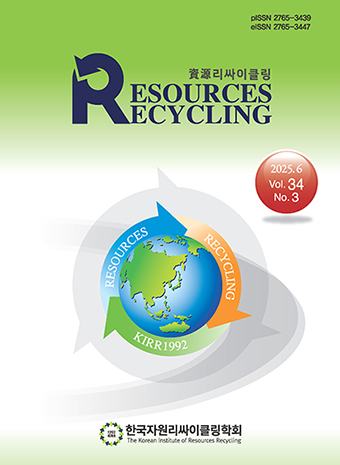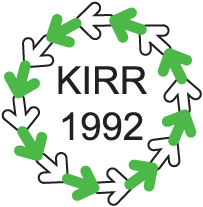Research Paper
Abstract
References
Information
- Publisher :The Korean Institute of Resources Recycling
- Publisher(Ko) :한국자원리싸이클링학회
- Journal Title :Resources Recycling
- Journal Title(Ko) :자원리싸이클링
- Volume : 32
- No :6
- Pages :45-53
- Received Date : 2023-12-11
- Revised Date : 2023-12-20
- Accepted Date : 2023-12-21
- DOI :https://doi.org/10.7844/kirr.2023.32.6.45



 Resources Recycling
Resources Recycling








